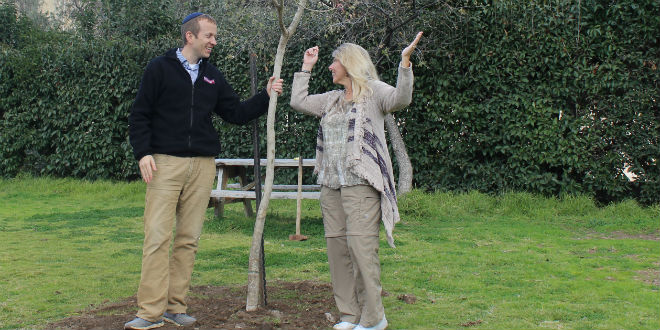Tu B’Shvat, known in Jewish tradition as the New Year for trees, lands on the 15th (t”u or tet-vav) of the Hebrew month of “Shvat.-” This means it always falls in the winter season.
In many parts of the world, at this time of year, the trees look completely lifeless, barren of any leaves at all. The grass has also turned from a green shade into a light brown.
In Israel, however, this time of year is cold but beautiful. During the winter season, the water level in Israel peaks and the grass and trees are green and full of life.
The religious significance of Tu B’Shvat provides us with a deeper understanding as to why the New Year for the trees falls out in the middle of the winter. The Bible refers to a seven year sabbatical cycle in which the Jewish people are commanded to let the land of Israel lie fallow.
“Six years you may sow your field and six years you may prune your vineyard and gather in the yield. But in the seventh year the land shall have a Shabbat of complete rest, a Shabbat of Hashem: you shall not sow your field or prune your vineyard. You shall not reap the aftergrowth of your harvest or gather the grapes of your untrimmed vines; it shall be a year of complete rest for the land.” (Leviticus 25:3-5)
During each of the six years preceding the sabbatical year, Jewish farmers must give various tithings from their agricultural produce. During the shemitah year, the produce is ownerless.
“But you may eat whatever the land during its Shabbat will produce—you, your male and female slaves, the hired and bound laborers who live with you, and your cattle and the beasts in your land may eat all its yield. (Leviticus 25:6-7)
Tu B’Shvat fits in with the rituals and laws such as those revolving around the seven-year sabbatical cycle by its role as a benchmark date for determining the years of arboreal products. Although the Jewish people officially welcome in a new year on the holiday of Rosh Hoshanah, trees in Israel do not really experience much of a “new year” until several months later. This is a result of unique and natural phenomena of distinct weather patterns in the land of Israel.
Summers in Israel are generally completely absent of rainfall, and the rainstorms do not usually occur again until a month or two after Rosh Hashana. The Jewish people only start praising God’s miracle of rainfall in their daily prayers on the holiday immediately following Sukkot (the Feast of Tabernacles). Moreover, Jews in Israel only start requesting rainfall several weeks after the Feast of Tabernacles.
For trees in Israel and the fruits they produce, the rains of each new year essentially only start factoring in around Tu B’Shvat. The Jewish commentator Rashi, who lived in France during the 11th Century, explains that by Tu B’Shvat, enough rains in Israel have fallen to help the sap rise in the trees enabling fruits to bud and sprout.
In Israel, one can see a very apparent Divine plan with initiating the process of growth in trees each year only a couple months before Spring.
The post Tu B’Shvat: A Demonstration of Divine Agricultural Planning appeared first on Breaking Israel News | Latest News. Biblical Perspective..
Source: Israel in the News

